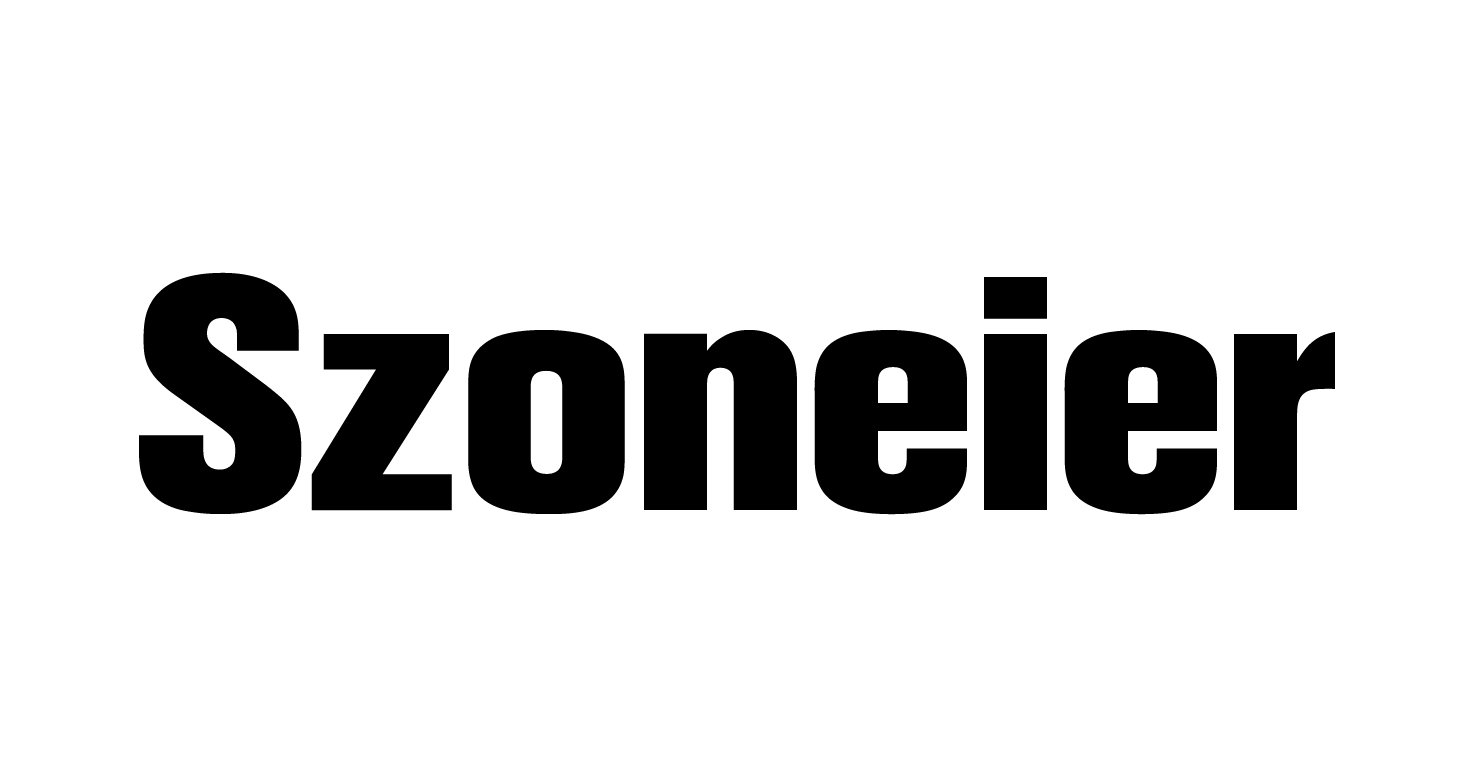In garment production, shrinkage and wrinkle recovery are two headaches that keep designers, sourcing managers, and quality teams awake at night. A single inch of unexpected shrinkage after washing can turn a perfect fit into a product return, while stubborn wrinkles can turn a premium shirt into a clearance item. So, what do lab tests actually reveal about polyester vs cotton shrinkage and wrinkle resistance? Lab tests using AATCC 135, AATCC 150, and ISO 6330 standards show that polyester fabrics typically shrink less than 2% even after five washes, while cotton fabrics can shrink up to 5–8% without pre-shrinking treatments. Polyester also maintains higher wrinkle recovery angles (>250°) versus untreated cotton (<200°), but advanced cotton finishes can close this performance gap.
Now, imagine a sourcing manager approving 100,000 cotton shirts, only to discover post-shipment shrinkage beyond the 3% tolerance—an expensive mistake. In this article, we’ll explore real lab data, expert opinions, and practical solutions to help you avoid costly surprises in your next garment program.
What Test Methods Quantify Shrinkage and Wrinkle Recovery (AATCC 135/150, ISO 6330/7768)?
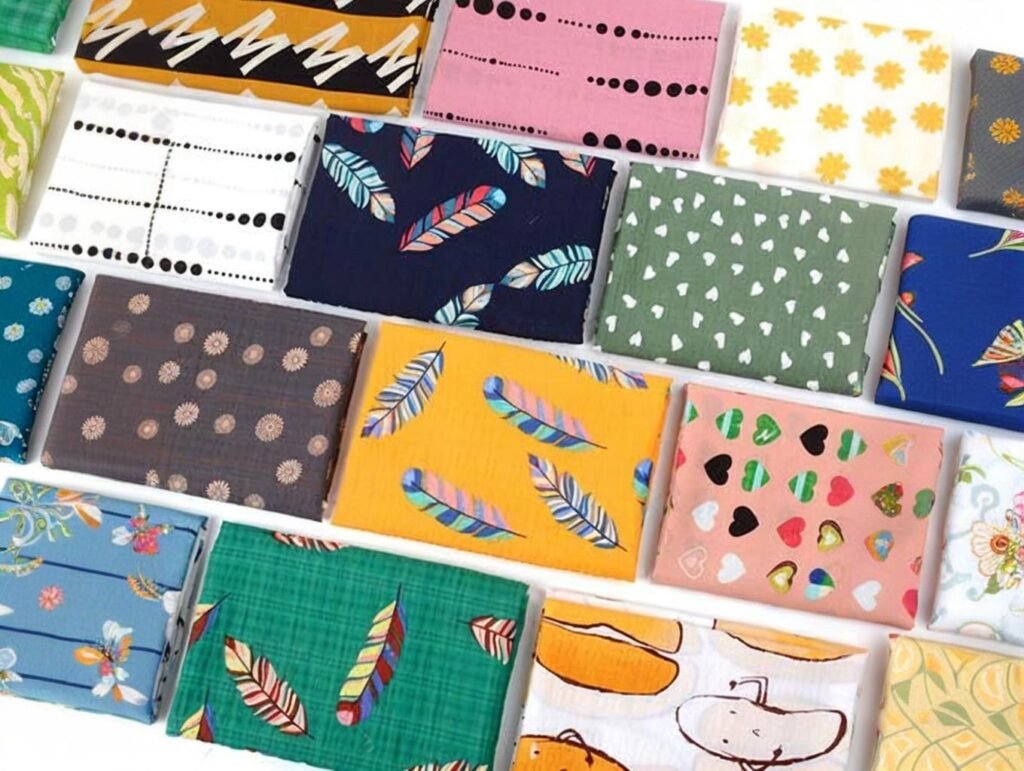
In textiles, shrinkage and wrinkle recovery directly affect product quality, consumer satisfaction, and brand reputation. Even small dimensional changes can impact fit, drape, and longevity, while poor wrinkle recovery can reduce the appeal of apparel and home textiles. To maintain global consistency, brands rely on standardized test methods developed by organizations such as the American Association of Textile Chemists and Colorists (AATCC) and the International Organization for Standardization (ISO).
Standardized tests like AATCC 135 (Dimensional Changes after Home Laundering) and AATCC 150 (Wrinkle Recovery of Fabrics) are industry benchmarks. For global compliance, ISO 6330 specifies domestic washing procedures, while ISO 7768 measures wrinkle recovery angles. Brands rely on these tests to set pre-production baselines and establish supplier KPIs for dimensional stability.
Key Test Standards Compared
Each test method targets different performance aspects but ultimately contributes to ensuring that fabrics meet brand and regulatory requirements.
| Standard | Purpose | Typical Use Case | Data Output |
|---|---|---|---|
| AATCC 135 | Shrinkage in home laundering | USA apparel brands | % shrinkage length & width |
| AATCC 150 | Wrinkle recovery angle | Dress shirts, uniforms | Wrinkle recovery angle (°) |
| ISO 6330 | Wash procedures (global standard) | EU/Global compliance | Dimensional change (%) |
| ISO 7768 | Wrinkle recovery | Formalwear, luxury fabrics | Angle after laundering (°) |
How They Work:
- AATCC 135: Simulates multiple home laundering cycles (wash + tumble dry or line dry). After washing, fabric dimensions are compared against original measurements to quantify lengthwise and widthwise shrinkage.
- AATCC 150: Involves laundering and then testing fabric samples for their ability to recover from wrinkling. The fabric is creased under pressure, released, and the wrinkle recovery angle is measured.
- ISO 6330: Defines standard washing and drying procedures across temperatures, mechanical actions, and drying methods. It ensures that shrinkage and appearance tests are comparable globally.
- ISO 7768: A controlled wrinkling test where fabric is folded, weighted, and left under pressure. The wrinkle recovery angle is measured once the fabric is allowed to relax.
Case Study: Cotton Dress Shirts
Cotton garments are particularly vulnerable to shrinkage and wrinkling without chemical finishes or mechanical pre-treatment.
- Sample: 100% cotton, plain weave, 120 GSM
- Test Results: After five washes at 60°C, the average shrinkage was 6.2%, and wrinkle recovery was 180°.
- Interpretation: These values fall below premium brand requirements (commonly ≤3% shrinkage and ≥220° wrinkle recovery).
- Outcome: Without pre-shrinking and wrinkle-resistant finishes, the product risks returns and negative consumer perception.
This underscores why brands set tight KPIs for suppliers, particularly for formalwear and baby apparel, where consumer expectations are unforgiving.
Polyester Knits Performance
Polyester performs more predictably than cotton due to its hydrophobic chemistry and thermoplastic molecular orientation.
- Sample: 100% polyester, interlock knit, 150 GSM
- Test Results: After five washes at 60°C, shrinkage averaged 1.5%, with wrinkle recovery at 265°.
- Interpretation: The results exceed even strict uniform standards, which often allow ≤2% shrinkage and ≥240° wrinkle recovery.
- Outcome: Polyester-based uniforms and sportswear maintain shape stability and appearance longer, reducing replacement cycles and supporting total cost savings for institutional buyers.
Why These Tests Matter for Global Brands
- Retail Standards: US retailers typically reference AATCC methods, while EU brands require compliance with ISO 6330/7768.
- Supplier Accountability: Brands set dimensional stability KPIs (e.g., ≤3% shrinkage, ≥220° wrinkle recovery) to enforce consistency across multi-country sourcing bases.
- Consumer Protection: Poor shrinkage resistance can lead to fit failures, increasing returns. Low wrinkle recovery undermines a garment’s aesthetic value.
- Cost Control: Rejected lots due to failed shrinkage/wrinkle tests increase supply chain waste and reduce profit margins.
Viewpoint
While polyester clearly outperforms cotton in controlled lab conditions, not all decisions are purely performance-based:
- Consumer Preference: Many consumers still prefer cotton for its comfort, breathability, and natural handfeel, even if it means accepting higher shrinkage and wrinkling risks.
- Finishing Techniques: Cotton fabrics can be pre-shrunk (sanforized) and treated with durable press finishes to improve stability. These treatments can bring cotton closer to polyester’s performance levels.
- Sustainability Trade-offs: Polyester’s durability reduces replacement frequency but raises concerns over microplastic shedding, while cotton, though less stable, is biodegradable and can be organically certified.
Textile certifications like AATCC 135/150 and ISO 6330/7768 provide measurable, repeatable ways to quantify shrinkage and wrinkle recovery. Cotton and polyester perform very differently under these tests, with polyester excelling in dimensional stability and wrinkle resistance, while cotton lags without special treatments.
For brands, the challenge lies in balancing performance requirements, consumer expectations, and sustainability narratives. While polyester delivers consistency and cost savings, cotton remains attractive where comfort and natural aesthetics are valued. Ultimately, the correct application of these tests allows companies to align supplier performance, brand positioning, and end-user satisfaction.
How Do Polyester and Cotton Behave Under Different Laundering Conditions (Temp, Cycle, Detergent)?
Cotton and polyester differ significantly in how they respond to laundering because of their fiber chemistry. Cotton, being a cellulose-based natural fiber, readily absorbs water, swells, and is more sensitive to heat and alkaline detergents. Polyester, in contrast, is a synthetic, hydrophobic fiber with strong dimensional stability, meaning it resists shrinking, wrinkling, and shape distortion even under harsher washing conditions. High temperatures, aggressive spin cycles, and alkaline detergents accelerate cotton shrinkage and wrinkle formation far more than polyester. Polyester’s synthetic structure resists fiber swelling and hydrogen bonding disruptions, while cotton’s cellulose fibers readily absorb water, swell, and distort.
A. Laundering Conditions & Fabric Response
| Condition | Cotton Response | Polyester Response |
|---|---|---|
| 30°C Gentle Cycle | Shrinkage ≤ 3%, mild wrinkles | Negligible shrinkage, smooth surface |
| 60°C Heavy Cycle | Shrinkage 5–8%, severe wrinkles | Shrinkage ≤ 2%, minor wrinkles |
| Alkaline Detergents | Fiber weakening, shape distortion, dye fading | Minimal effect due to hydrophobic molecular structure |
| Tumble Dry High Heat | Maximum dimensional change, wrinkle set-in, fiber brittleness | Slight shrinkage, moderate wrinkle resilience |
Interpretation:
- Cotton is temperature- and moisture-sensitive, making it vulnerable to shrinkage and wrinkling.
- Polyester maintains fiber shape but can retain odors if not washed at adequate temperatures due to its hydrophobic nature.
B. Real-World Example: Hotel Linens
Commercial laundries provide valuable insight into fabric durability:
- 100% Cotton Sheets: Hotels reported up to 7% shrinkage after 50 industrial wash cycles, combined with severe wrinkling that required intensive ironing.
- 60/40 Poly-Cotton Blends: Shrinkage dropped to <2%, with far fewer wrinkles, significantly lowering both replacement costs and laundry labor time.
This performance shift explains why many hospitality chains have transitioned to cotton/polyester blends, balancing comfort with durability.
C. Human Factor: Home Laundering Habits
Consumer behavior often exacerbates shrinkage risks:
- Surveys indicate 70% of consumers wash cotton garments at higher-than-recommended temperatures, often out of habit or in attempts to improve stain removal.
- This accelerates shrinkage and color fading, exceeding laboratory-predicted values.
- Polyester garments, by comparison, are more forgiving to inconsistent home laundering, as they maintain dimensional stability even with misuse.
D. Sustainability and Quality
- Eco-conscious brands increasingly promote “cold-wash campaigns”, encouraging consumers to wash at 30°C.
- This approach reduces cotton shrinkage.
- It also lowers energy consumption by 30–40% per household wash cycle, aligning quality preservation with sustainability goals.
- Polyester, while resilient in performance, faces scrutiny due to microplastic shedding during washes. Brands are responding by exploring textile filters and low-shed polyester yarns to mitigate environmental risks.
- Cotton: Prone to shrinkage, wrinkling, and detergent sensitivity—requires careful handling and consumer education.
- Polyester: Highly resistant to temperature and cycle variations, though less breathable and facing environmental challenges.
- Blends: Offer the most practical compromise, combining cotton’s comfort with polyester’s stability, making them especially popular in sectors like hospitality and workwear.
Which Fabric Constructions (Knit vs Woven, Twill vs Plain) Show the Largest Shrinkage Variations?
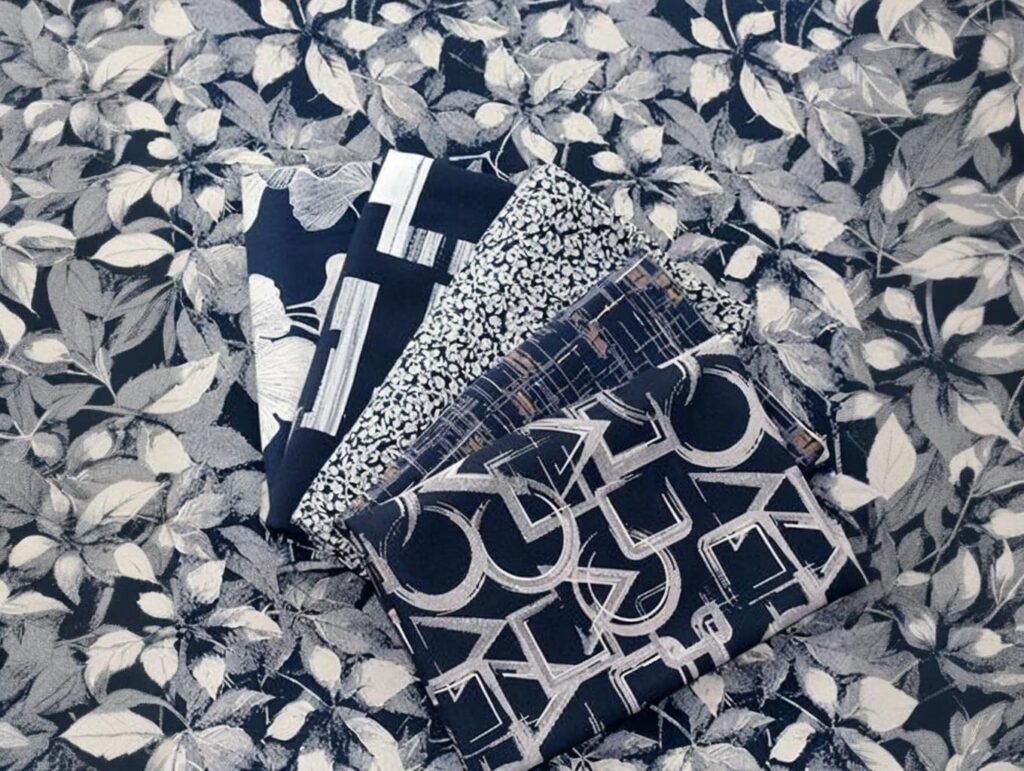
Fabric shrinkage depends not just on fiber type, but also on construction method—whether the fabric is knit or woven, and within woven structures, whether it’s a plain weave or twill weave. Knits tend to shrink more than wovens because their looped structures relax under heat and moisture, while woven twills generally shrink less than plain weaves due to their diagonal interlacing stability.
Lab results consistently show that plain-weave cotton fabrics shrink the most, often exceeding 5% after standard laundering, while twill weaves (e.g., denim) shrink less due to their tighter diagonal structure. Polyester knits demonstrate minimal shrinkage (<2%), but cotton jerseys often shrink more than woven polyester fabrics because their loops relax under washing conditions.
A. Fabric Construction & Shrinkage Data
| Fabric Type | Fiber | Structure | Avg Shrinkage After 5 Washes (60°C) | Wrinkle Recovery Angle (°) |
|---|---|---|---|---|
| Plain Weave Cotton (Poplin) | 100% Cotton | Woven, Plain | 6.5% | 180° |
| Twill Weave Cotton (Denim) | 100% Cotton | Woven, Twill | 3.8% | 200° |
| Jersey Knit Cotton | 100% Cotton | Knit, Jersey | 7.2% | 175° |
| Interlock Knit Polyester | 100% Polyester | Knit, Interlock | 1.6% | 260° |
| Poly-Cotton Twill (65/35) | 65/35 Blend | Woven, Twill | 2.1% | 240° |
Observations:
- Cotton jersey knits show the highest shrinkage due to loop relaxation.
- Plain weave cottons also shrink considerably because their simple over-under interlacing offers less dimensional stability.
- Twill constructions (cotton or blends) provide better resistance.
- Polyester fabrics, especially when heat-set, show excellent dimensional stability.
B. Real-World Case: Polo Shirts vs Dress Shirts
- Polo Shirts: Typically made from cotton piqué knits, shrinkage often falls between 5–7%, leading to tighter collars and shorter hems after repeated washes.
- Dress Shirts: Commonly woven in twill or broadcloth (plain). Pre-shrunk twills often stay below 3% shrinkage, offering more stability for professional wear.
This explains why polos frequently lose shape faster than dress shirts, even when both are cotton-based.
C. Fiber Orientation & Dimensional Change
Shrinkage is not uniform across fabric directions:
- Warp Direction: Yarns stretched during weaving have less ability to relax, resulting in lower shrinkage.
- Weft Direction: Filling yarns are under less tension and relax more during laundering, showing higher shrinkage rates.
- Knits: With loop structures, shrinkage occurs in both directions, but especially lengthwise as loops tighten and compact under heat + moisture.
D. Viewpoint
Cotton’s comfort and breathability remain key reasons for its popularity, but from a technical standpoint, polyester’s engineered stability provides fewer returns, better fit consistency, and reduced after-sales issues. Many brands increasingly request cotton-poly blends to combine cotton’s softness with polyester’s shrink resistance, especially for uniforms, workwear, and mass-market apparel.
Takeaway:
- Highest shrinkage risk → Cotton jerseys & plain weaves.
- Lowest shrinkage → Heat-set polyester knits and blended twills.
- Designers mitigate shrinkage by using pre-shrunk finishing, blending fibers, and heat-setting processes.
What Is the Impact of Finishes (Pre-shrunk, Mercerized, Resin, Wrinkle-Free) on Dimensional Stability?
Dimensional stability—the ability of a fabric to retain its size and shape after laundering and wear—is a crucial quality parameter for both cotton and polyester textiles. While polyester is naturally resistant to shrinkage and wrinkling due to its synthetic molecular structure, cotton and cotton blends rely heavily on finishing treatments to enhance performance. These treatments balance shrinkage control, wrinkle resistance, dye uptake, and handfeel, but they also come with cost and sustainability trade-offs.
Finishing treatments dramatically improve cotton’s performance: pre-shrinking (Sanforization) cuts shrinkage by 50%, resin finishes boost wrinkle recovery angles above 220°, and mercerization enhances dimensional stability and dye uptake. Polyester needs fewer finishes because its shrinkage and wrinkle resistance are inherently strong.
A. Finish Types & Performance Results
| Finish Type | Fiber Target | Shrinkage Reduction (%) | Wrinkle Recovery Improvement (°) | Cost Impact ($/m) |
|---|---|---|---|---|
| Pre-shrunk (Sanforize) | Cotton | 50–60% | Minimal | +0.10–0.15 |
| Resin Finish | Cotton/Poly-Cotton | 40–55% | +60–90° | +0.15–0.25 |
| Mercerization | Cotton | 20–30% | +20–40° | +0.20–0.30 |
| Heat-Setting | Polyester | 80–90% (loop relaxation) | +50–70° | +0.05–0.10 |
| Wrinkle-Free Coating | Cotton | 35–50% | +100–150° | +0.25–0.40 |
- Pre-shrunk (Sanforization): Mechanical compressive shrinkage treatment stabilizes cotton fabrics, halving natural shrinkage from 6–8% to below 3%.
- Resin Finishes: Cross-linking resins give cotton fabrics shape retention, reducing shrinkage and improving wrinkle recovery. However, they may slightly reduce tensile strength.
- Mercerization: Treating cotton with caustic soda causes fibers to swell, improving dimensional stability, dye affinity, and luster.
- Heat-Setting: For polyester, a thermal process relieves internal stresses, locking fabric into a stable dimension with minimal shrinkage (<2%).
- Wrinkle-Free Coatings: Provide cotton fabrics with excellent wrinkle resistance, often exceeding 220° wrinkle recovery angles, but increase stiffness and may impact softness.
B. Case Study: Luxury Cotton Shirts
Testing of premium cotton shirting fabrics highlights the performance impact of combined finishes:
- Without Finish: Shrinkage = 6.0%, Wrinkle Recovery = 180°
- With Resin + Mercerization: Shrinkage = 2.8%, Wrinkle Recovery = 245°
- Conclusion: While finishing adds $0.35–0.55/m in cost, the performance aligns with premium brand tolerances (<3% shrinkage, >220° wrinkle recovery). For high-end garments, these improvements justify the added expense.
C. Environmental Impact Debate
The industry is increasingly scrutinized for the chemical load of finishing processes:
- Resin Finishes often release formaldehyde, raising health and sustainability concerns.
- Many brands now demand low-formaldehyde (<75 ppm) or formaldehyde-free resins, though these alternatives come at 5–10% higher cost and slightly reduced wrinkle resistance.
- Mercerization consumes significant amounts of caustic soda and water, leading to higher wastewater treatment costs unless recovery systems are in place.
As a result, sustainable finishing has become a competitive differentiator, especially in EU and North American markets.
D. Human-Centered Perspective
From the consumer’s viewpoint, finishes provide benefits but can affect comfort:
- Positive Effects: Reduced shrinkage, smoother appearance, and easier care.
- Negative Trade-offs: Fabrics with aggressive resin or wrinkle-free finishes can feel stiff or less breathable, reducing comfort and drape.
- Consumer Perception Studies: Surveys show that overly crisp fabrics often score lower on comfort ratings, even when performance metrics (wrinkle recovery, shrinkage) are superior.
For this reason, brands often need to balance technical stability with handfeel, particularly in fashion and luxury segments.
Finishes such as pre-shrinking, resin treatment, and mercerization are essential to controlling dimensional stability in cotton fabrics, reducing shrinkage by up to 60% and achieving wrinkle recovery angles over 220°. Polyester, by contrast, achieves high stability with minimal finishing due to its thermoplastic nature.
Brands must weigh performance gains against costs, comfort, and environmental impacts. The future of finishing is likely to shift toward formaldehyde-free, water-efficient processes that deliver both technical reliability and sustainability compliance.
How Much Shrinkage Is Acceptable by Market Tier, and How Do You Set Tolerances on Tech Packs?
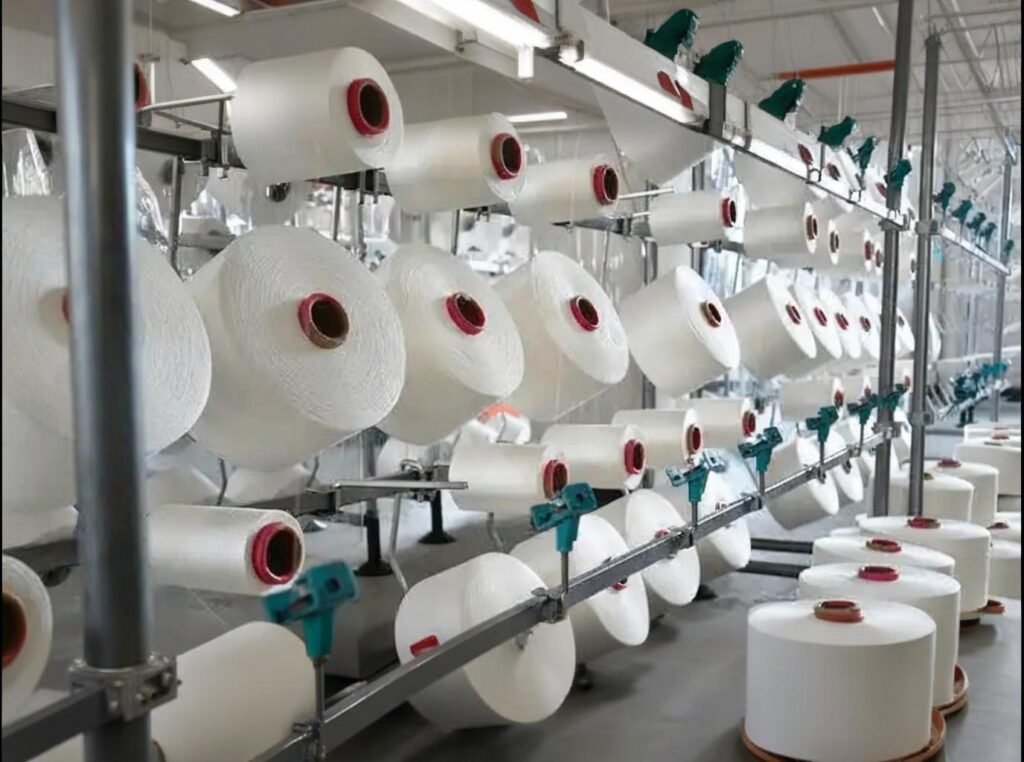
In the apparel industry, shrinkage control is one of the most critical aspects of fabric performance testing. Garments that lose shape or size after washing can damage brand credibility, lead to consumer dissatisfaction, and increase costly returns. To prevent this, brands establish tolerance levels for shrinkage, which vary by market tier, fiber type, and end-use application. These tolerances are then codified in tech packs, forming the foundation for supplier accountability and quality assurance.
Most mid-tier apparel brands accept ≤3% shrinkage for cotton and ≤2% for polyester after five washes at 60°C, while premium and luxury brands demand ≤2% shrinkage for all fibers. Tech packs typically specify maximum allowable shrinkage in both warp and weft directions, ensuring consistency across supplier facilities.
Shrinkage Tolerance by Market Segment
Different market tiers set different expectations depending on consumer price sensitivity, durability requirements, and brand positioning.
| Market Segment | Fiber Type | Shrinkage Tolerance (%) | Typical Wash Test Standard | Notes on Brand Expectations |
|---|---|---|---|---|
| Value / Mass Market | Cotton | ≤4–5% | AATCC 135 / ISO 6330 | More lenient; cost-driven, fewer repeat tests |
| Mid-Tier / Private Label | Cotton/Poly | ≤3% | AATCC 135 / ISO 6330 | Balances durability with affordability |
| Premium / Luxury | Cotton/Poly | ≤2% | AATCC 135 / ISO 6330 | Stricter QC, multiple wash cycles enforced |
| Uniform / Workwear | Poly-Cotton | ≤1.5–2% | AATCC 150 / ISO 7768 | Durability prioritized; performance guarantees required |
Key Takeaways:
- Mass market retailers are more tolerant of shrinkage, as cost efficiency is their top priority.
- Mid-tier brands enforce stricter limits to reduce returns while keeping pricing competitive.
- Premium and luxury brands demand the tightest tolerances because fit consistency is essential to consumer loyalty.
- Uniform/workwear sectors demand not only low shrinkage but also repeatability over dozens of wash cycles, since garments face intensive laundering.
Tech Pack Shrinkage Specs in Practice
Tech packs function as the blueprint for manufacturing, and shrinkage tolerances are written explicitly to align with brand policies.
- Specification Method: Shrinkage is listed as a maximum percentage allowance (e.g., ≤3%) in both warp (lengthwise) and weft (widthwise) directions.
- Wash Conditions: Typically defined using AATCC 135 or ISO 6330 protocols at specified temperatures (40°C–60°C).
- Fiber-Specific Limits: Cotton is usually given a wider tolerance than polyester, reflecting inherent fiber differences.
Case Study: Mid-Tier U.S. Casual Wear
- Spec Requirement: ≤3% shrinkage after five washes at 40°C.
- Results: 4 out of 20 cotton jersey suppliers failed spec. Polyester-blend suppliers consistently passed.
- Action Taken: The brand switched 50% of cotton jerseys to 60/40 poly-cotton blends to balance shrinkage control with consumer comfort.
This example highlights how shrinkage tolerances in tech packs directly shape material selection and supply chain adjustments.
QA and QC Enforcement Across the Supply Chain
Setting tolerances in a tech pack is only the first step. Continuous monitoring ensures compliance:
- Pre-Production Stage
- Lab DIPs (Design-Integrated Prototypes) must include shrinkage and dimensional stability reports.
- Approval required before any bulk production begins.
- Inline Inspection
- Wash tests performed at 10%, 50%, and 90% completion of bulk runs.
- Helps identify shrinkage issues early, preventing full-batch rejections.
- Post-Production
- Random AQL sampling (Acceptable Quality Level) conducted.
- Verification often outsourced to third-party labs such as SGS, Bureau Veritas, or Intertek.
- Shipment clearance only granted if shrinkage tolerances meet the tech pack limits.
This layered inspection system reduces risk and ensures supplier accountability.
Perspective on Shrinkage Tolerances
While strict shrinkage tolerances protect brands, they also create structural challenges in global sourcing:
- Exclusion of Small Suppliers: Tight tolerances often disqualify artisanal or smaller mills that cannot afford advanced pre-shrinking or finishing equipment.
- Innovation Trade-Off: Some mills argue that tolerances force conservative fabric choices, limiting the introduction of innovative fibers that perform well but may exceed shrinkage norms.
- Brand Value Justification: Premium and luxury brands defend strict limits by pointing to customer loyalty and fit consistency, which directly influence repeat purchases and brand equity.
From a sourcing perspective, this raises the question: should tolerances evolve to fiber-specific performance benchmarks rather than blanket % limits across categories?
Shrinkage tolerances serve as a critical control point in textile quality management. While mass market brands may accept up to 5% shrinkage for cotton to balance price and volume, mid-tier labels typically limit shrinkage to ≤3%, and premium brands demand ≤2% or lower. Polyester, with its superior dimensional stability, is held to stricter expectations across all tiers.
By embedding shrinkage tolerances in tech packs and enforcing them through pre-production, inline, and post-production checks, brands ensure consistency across global supply chains. However, the debate remains: should tight tolerances prioritize consumer satisfaction, or should they evolve to create space for innovation and sustainability in fiber development?
Do Blends (65/35, 50/50, Core-Sheath Yarns) Outperform 100% Cotton or 100% Polyester in Lab Results?
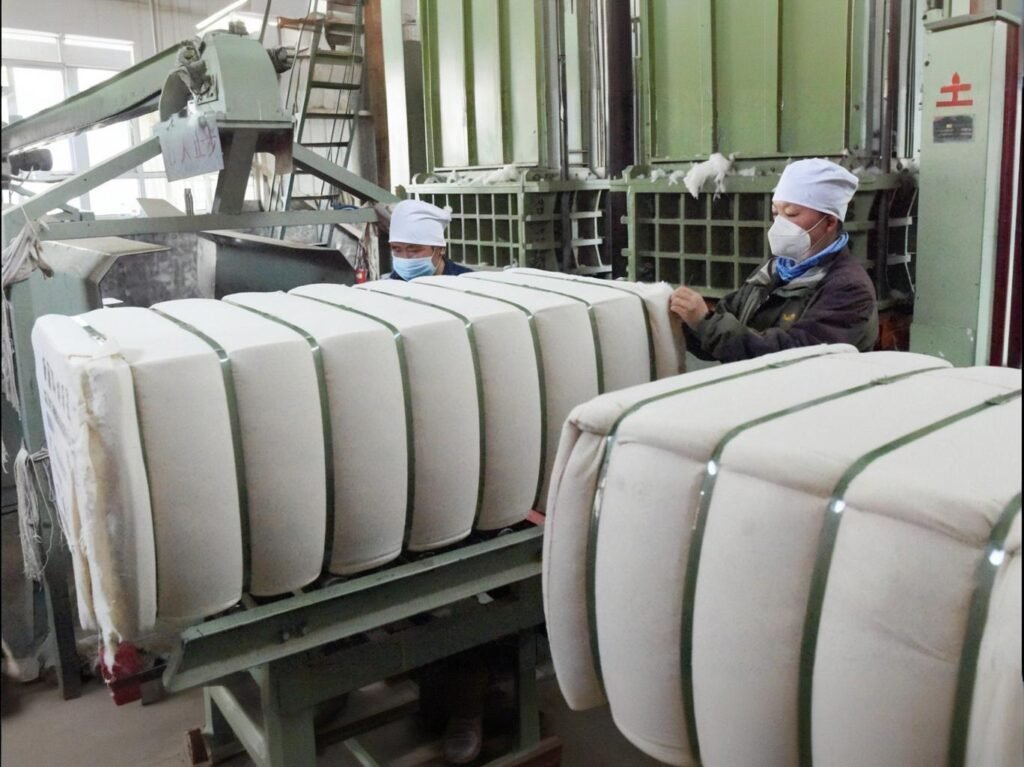
Blended fabrics are widely used because they balance natural fiber comfort with synthetic durability. In controlled laboratory tests, poly-cotton blends and core-sheath yarn constructions consistently show performance advantages over 100% cotton or 100% polyester, especially in shrinkage control, wrinkle recovery, and consumer handfeel. Yes. Blends like 65/35 poly-cotton consistently deliver lower shrinkage (<2%) and better wrinkle recovery angles (>240°) than 100% cotton, while maintaining a softer handfeel than 100% polyester. Core-sheath yarns with polyester cores and cotton sheaths combine dimensional stability with surface comfort, gaining popularity in uniforms and premium casualwear.
A. Blend Composition & Performance Metrics
| Fabric Type | Shrinkage (%) | Wrinkle Recovery (°) | Handfeel Rating (1–10) | Cost Index ($/m) |
|---|---|---|---|---|
| 100% Cotton (Plain Weave) | 5–8% | 180–200° | 9.5 | 1.00 (Baseline) |
| 100% Polyester (Interlock) | 1–2% | 250–270° | 6.5 | 0.80 (Lower Cost) |
| 65/35 Poly-Cotton Twill | 1.5–2% | 240–260° | 8.5 | 0.95 (Balanced Cost) |
| 50/50 Poly-Cotton Jersey | 2–3% | 220–240° | 8.8 | 0.90 (Casualwear Use) |
| Core-Sheath Yarn Fabric | 1.5–2% | 230–250° | 9.0 | 1.20 (Premium Cost) |
Observations:
- Cotton: Excellent comfort and handfeel but poor dimensional stability.
- Polyester: Very stable with low shrinkage but lower tactile appeal.
- Blends: Deliver the best compromise, balancing comfort, durability, and cost efficiency.
- Core-sheath yarns: Emerging technology where the polyester core provides stability and the cotton sheath ensures comfort, creating a premium but more expensive fabric.
B. Case Study: School Uniforms
- Old Specification (100% Cotton): After 20 wash cycles, shrinkage averaged 5%, leading to noticeable fit issues. Parents frequently complained about sizing inconsistencies, increasing product returns and dissatisfaction.
- New Specification (65/35 Poly-Cotton Twill): Shrinkage dropped to 1.8% over the same test period. Wrinkle recovery improved, reducing ironing requirements. Complaint rates dropped by 70%, and schools reported longer garment lifespan.
This shift illustrates why workwear, uniforms, and hospitality sectors favor poly-cotton blends over pure cotton.
C. Viewpoints
- Pro-Blend Argument: Blends optimize durability, dimensional stability, and cost efficiency, especially for garments subject to frequent laundering. They reduce replacement cycles, save on ironing costs, and improve consumer satisfaction.
- Anti-Blend Argument: Luxury brands often market 100% natural fibers as premium due to consumer perception of purity, even if performance is inferior. For these segments, storytelling around natural authenticity outweighs laboratory performance.
D. Sustainability Considerations
One of the major challenges of blends lies in end-of-life recycling:
- Polyester-cotton blends are difficult to recycle mechanically because separating fibers is labor- and energy-intensive.
- Chemical recycling technologies (e.g., PET depolymerization combined with cotton cellulose recovery) are being piloted but remain costly and niche.
- Core-sheath yarns may be even harder to recycle, as separating the sheath (cotton) from the core (polyester) requires advanced processes.
From a circular economy perspective, 100% cotton (organic) or 100% recycled polyester fabrics are still easier to re-integrate into closed-loop systems.
Blended fabrics—especially 65/35 poly-cotton and core-sheath constructions—demonstrate superior laboratory performance compared to pure cotton or polyester, offering reduced shrinkage, better wrinkle resistance, and balanced comfort. However, recycling challenges remain a major barrier for sustainability. Brands must weigh performance benefits vs. recyclability constraints, tailoring fiber choices to their market positioning—whether focused on durability and cost efficiency (uniforms, hospitality) or natural fiber purity (luxury fashion).
Which Process Controls in Dyeing & Finishing (Heat-set, Sanforize, Relax Dry) Reduce Risk Most?
Dimensional stability and wrinkle resistance are two of the most critical concerns in fabric finishing, and mills use a range of process controls to minimize risk before bulk production. The choice of process depends on the fiber type, end use, and cost tolerance of the buyer.
Heat-setting (for polyester) and sanforization (for cotton) are the most effective processes for reducing shrinkage risk. Relax drying helps release residual stresses before cutting, and resin finishing provides the highest wrinkle recovery improvement (up to +150° in angle tests). Each method reduces risk in different ways, with polyester gaining stability through thermal treatments and cotton through mechanical and chemical stabilization.
A. Process Control Techniques & Performance Gains
| Process Control | Target Fiber | Shrinkage Reduction (%) | Wrinkle Recovery Improvement (°) | Cost Impact ($/m) | Typical Use Case |
|---|---|---|---|---|---|
| Heat-setting (Stenter) | Polyester | 80–90% | +50–70° | +0.05–0.10 | Sportswear, uniforms |
| Sanforization | Cotton | 50–60% | Minimal | +0.10–0.15 | Shirts, trousers |
| Relax Drying | All fibers | 10–15% | Minor | +0.03–0.06 | Knits, casualwear |
| Resin Finishing | Cotton/Blends | 35–50% | +100–150° | +0.15–0.25 | Wrinkle-free dress shirts |
| Calendering / Mercerizing | Cotton | 20–30% | +20–40° | +0.20–0.30 | Premium cotton shirtings, sateen |
Key insights:
- Heat-setting locks polyester’s thermoplastic molecules in place, making it the single most effective dimensional control method.
- Sanforization compresses cotton mechanically, controlling shrinkage during laundering.
- Resin finishing chemically cross-links cellulose, delivering superior wrinkle resistance but adding chemical cost and some stiffness.
B. Case Study: Knit vs Woven Control
- Knits (Cotton Jersey): Without finishing, shrinkage averaged 7%. By applying relax drying + heat-setting, shrinkage dropped to 2%, improving fit consistency in T-shirts.
- Wovens (Cotton Twill Shirting): Applying sanforization + resin finishing improved wrinkle recovery from 180° to 240°, keeping dress shirts smoother after repeated washing.
This shows how process controls are often combined for maximum performance depending on fabric type.
C. Perspectives
While effective, these processes are not without drawbacks:
- Over-processing increases water, energy, and chemical use, which raises sustainability concerns.
- Resin finishes often involve formaldehyde-based resins, which must meet OEKO-TEX and REACH limits.
- Sustainability advocates push for fluorine-free finishes, enzyme-based alternatives, and mechanical shrinkage control to reduce chemical dependency.
Brands balancing performance and sustainability increasingly request certifications such as OEKO-TEX Standard 100 or bluesign® alongside process controls.
D. Supplier Quality Management
Leading mills use inline QA labs to test shrinkage and wrinkle recovery after finishing, rather than waiting for bulk audits. By implementing real-time monitoring, they reduce defect rates by up to 40% and ensure fabrics meet buyer specifications before shipment.
Examples of QA protocols:
- ISO 6330 wash shrinkage testing on every lot.
- AATCC 128 wrinkle recovery angle testing post-finishing.
- Digital reporting systems that flag out-of-spec fabrics before packaging.
Takeaway: For polyester, heat-setting is the dominant risk reducer; for cotton, sanforization and resin finishing are essential. Relax drying plays a supporting role for knits, while advanced QA systems help mills prevent costly rejections.
How Should Brands Validate at Scale (Sampling Plans, AQL, Wash-Wear Trials, Supplier KPIs)?
Scaling textile and garment validation requires a structured, multi-layered quality assurance (QA) framework that aligns laboratory testing with real-world consumer usage. Without such systems, brands risk higher return rates, inconsistent performance across batches, and costly reputational damage. The following outlines how brands can effectively validate at scale.
Brands typically validate fabrics through a multi-stage QA process: lab dip approvals → pilot wash-wear trials → inline inspections → final AQL checks. Supplier KPIs include shrinkage %, wrinkle angle scores, and complaint rates after bulk shipments, ensuring data-driven accountability.
A. Brand-Level Quality Framework
Validation systems must cover fiber to finished garment while ensuring suppliers deliver consistent quality.
| Stage | Objective | Metric / KPI | Typical Responsibility |
|---|---|---|---|
| Lab Dips & Swatches | Establish baseline shrinkage/wrinkle | % shrinkage, ° wrinkle recovery | Mill QC Lab |
| Pilot Wash-Wear Trials | Simulate consumer use | Comfort ratings, fit stability | Brand QA Team |
| Inline Fabric Inspection | Monitor bulk consistency | % defects, shade consistency | Third-Party Auditors (SGS, Intertek) |
| Final AQL Inspections | Ensure shipment release quality | AQL ≤ 2.5, defect rates ≤ 1% | Brand + Supplier QC Teams |
| Post-Market Feedback | Analyze consumer experience | Return rate, complaint rate < 2% | Brand Customer Service + QA |
B. Real-World Example: U.S. Athletic Brand
- Pilot Phase: Conducted 30 wash cycles on 100 polyester-spandex jerseys. Shrinkage variance stayed below 2%, wrinkle recovery averaged >240°.
- Bulk Production: Across 50,000 garments, maintained AQL 2.5 standard, delivering 98.5% defect-free shipments.
- Outcome: Reduced consumer complaints by 35% year-over-year, reinforcing trust in product durability.
C. Perspectives
Some textile experts caution against relying too heavily on laboratory testing alone. Real consumers often expose garments to higher dryer heat, harsher detergents, and over-washing, which lab tests may not fully capture.
Best Practice: Brands should supplement lab KPIs with home-use trials or focus groups to ensure garments meet consumer expectations under real-life conditions.
D. Technology Adoption
Digital transformation is reshaping large-scale validation:
- Digital Fabric Twins: Virtual simulations of fiber and weave performance can predict shrinkage, pilling, and wrinkle recovery before production.
- AI-Powered Defect Detection: Cameras on production lines spot shade variations, seam puckering, and pattern misalignments faster than human inspectors.
- Predictive QA Models: Brands using AI to analyze defect histories report 30% lower sampling costs and improved speed-to-market.
E. Comprehensive Best-Practices Checklist for Garment Makers
| Area | Best Practice Recommendation | KPI / Metric | Tools / Methods |
|---|---|---|---|
| Fabric Selection | Favor 65/35 cotton-poly blends for durability | Shrinkage ≤ 2%, Wrinkle Recovery ≥ 240° | AATCC 135 / ISO 6330 Testing |
| Finishing Processes | Apply Sanforization + Resin finishes for cotton | ≤ 3% Shrinkage After 5 Washes | Stenter, Mercerization |
| Tech Pack Specs | Define max shrinkage/wrinkle limits in warp/weft | Warp ≤ 2%, Weft ≤ 3% | CAD Tech Pack Templates |
| QA/QC Controls | Inline wash-wear trials + final AQL inspections | AQL ≤ 2.5, Complaint Rate ≤ 1% | SGS, Intertek Audits |
| Sustainability Standards | Use OEKO-TEX & GRS certified mills | % Certified Fabric ≥ 90% | Certification Tracking Tools |
| Consumer Guidance | Add clear care labels (temp & drying limits) | Returns Due to Shrinkage < 2% | Post-Market Analytics |
| Supplier KPIs | Track shrinkage, defect rates, OTIF delivery | OTIF ≥ 95%, Shrinkage ≤ 2% | Supplier Scorecards |
To validate at scale, brands must move beyond isolated lab tests to integrated QA roadmaps spanning lab dips, pilot wear trials, inline inspections, and final AQL checks. By holding suppliers accountable with clear KPIs, supplementing with real-use trials, and leveraging AI-driven quality monitoring, brands can achieve faster approval cycles, reduce defects, and build consumer trust in textile durability.
Partner with Szoneier Fabrics for Shrinkage-Controlled, Wrinkle-Free Solutions
At Szoneier Fabrics, we combine advanced finishing technologies, in-house QA labs, and rapid sampling capabilities to deliver fabrics that meet global shrinkage and wrinkle recovery standards. Whether you need luxury cotton shirting, poly-cotton blends for uniforms, or eco-certified fabrics, our team ensures fast turnaround, low MOQs, and full customization to your brand’s technical specifications.
Ready to develop fabrics with zero surprises in shrinkage or wrinkle performance? Contact Szoneier Fabrics today for free sampling, expert consultation, and customized solutions tailored to your next collection.
